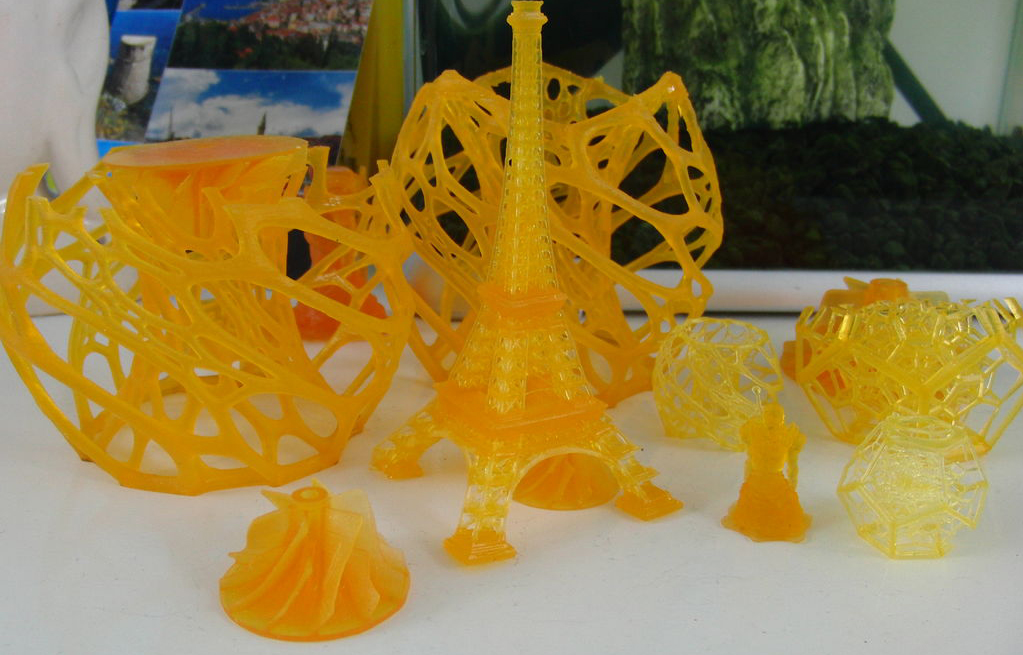Hobbyist Builds High Resolution DLP Printer

Objects build using a DIY DLP 3D printer system. Courtesy of Tristram Budel.
July 16, 2013
Most companies pour a significant amount of money into research and development, but aren’t always willing to take chances on simplifying existing technology to appeal to your average consumer. This makes a certain amount of sense. If your customer base is made up of companies with deep pockets, there isn’t much of an incentive to decrease the perceived quality and prestige of owning one of your products by “dumbing it down” for a broader audience.
This leaves a gap that has pretty consistently been filled by small businesses willing to innovate or hobbyists who would like to enjoy the benefits of a certain technology, but aren’t willing to pay a premium price. The world of consumer grade 3D printers is mainly dominated by material extrusion systems, such as those produced by MakerBot, but not every hobbyist is content with the resolution offered by these systems.
Enter Tristram Budel, hobbyist and owner of a CNC shop in the Netherlands. Budel was interested in building a 3D printer, but also wanted to add to the Maker community by developing a DIY system that used a process other than material extrusion. His solution was to design and build a direct light processing (DLP) additive manufacturing (AM) system. DLP is a form of stereolithography, which uses light and photocurable resins to build three-dimensional models.
Budel explains why he wanted to build the system on the project’s instructables page:
Why did we work on a 3D printer? Well as you all know the world needs more 3D printers, more platforms for creation, more freedom. More possible ways to show your epic awesomeness in creation. And most of all the freedom to design and fabricate exactly what you need, when you need it without any barriers. In short 3D printers are awesome, you can never have enough 3D printers.
In order to ensure that other hobbyists could afford to follow in his footsteps, Budel restricted himself to a budget. To meet this goal, he built or machined most of the printer’s components himself. For his light source, Budel purchased an Acer projector, and decided on a bottom-up method of fabrication for his objects that would allow him to get by with a shallower (i.e. less expensive) resin tub. To guarantee the area around his printer was dust and light free, he built a simple wooden box to encase the printer.
The end result is a printer with a (according to Budel) .1µ resolution that can be reproduced by anyone with time and the correct tools at hand. Until AM systems like the Form 1 really get going, this sort of DIY spirit can bring fine detail AM to small businesses and hobbyists that can’t afford to spend hundreds of thousands of dollars on a stereolithography printer. That is what I call democratization of production.
You can find plans for Budel’s printer on instructables. Below you’ll find a video overview of photolithography.
Source: instructables
Subscribe to our FREE magazine, FREE email newsletters or both!
About the Author
John NewmanJohn Newman is a Digital Engineering contributor who focuses on 3D printing. Contact him via [email protected] and read his posts on Rapid Ready Technology.
Follow DE






